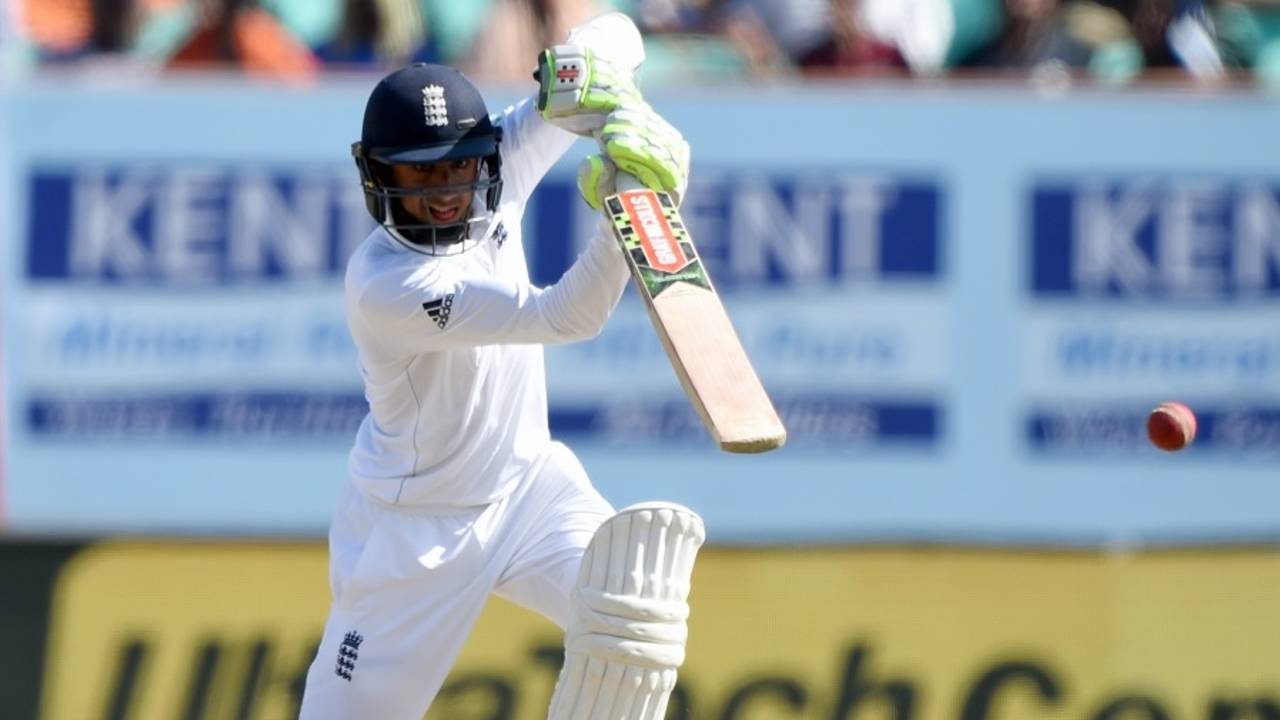Haseeb takes the backward and forward approach
From Haseeb's spin tactics to Cook's captaincy, Aakash Chopra examines the technical talking points from day five in Rajkot
Haseeb Hameed got forward to the spin of R Ashwin to fine effect • AFP
Haseeb Hameed got a reprieve in the first innings when Vijay grassed an edge at first slip. Umesh Yadav's delivery was on a fifth-stump and a three-quarters length, a spot where you're not sure whether to go forward or back, and that's where Haseeb was found wanting too. In the first innings, he tried to go back and, in the second innings, to an identical delivery from Shami (over 40.1) he tried to go forward, albeit to an older ball. On both occasions the ball found the outside edge. India's seamers will doubtless target the same line and length more often in the series.
Haseeb stood on a leg-stump line for Ravindra Jadeja and tried to play most of his deliveries off the back foot. Since the balls pitching within the stumps didn't turned appreciably throughout the match, the ones that stayed straight after pitching posed the bigger threat against Jadeja. To counter that, Haseeb preferred to play back as a default tactic. Against R Ashwin, however, he stayed on an off-stump line and went forward to most deliveries, which took lbw out of the equation by ensuring the impact was always outside off. It was a good tactic on this pitch in Rajkot.
For a spinner, the best way to succeed on these pitches is to pitch the ball full and bring the batsman onto the front foot as often as possible. India's spinners, brought up on these surfaces, have known the right length like the back of their hands and haven't been afraid of bowling the full length. Common sense would tell you that, if a batsman were to succeed against them, he must drive the ball well. But have a look at Cook's wagon wheel against spin and it'll tell you how wrong our assumption is. He hardly ever drove the ball through the off-side, irrespective of which way the ball was turning after pitching.

In this Test, India's seamers not only bowled the fastest balls but, also, their average speeds were higher than their English counterparts. Since India's batsmen got hit a few times on the helmet, it was expected that their own seamers would return the favour too. While they did try a few bouncers to Alastair Cook, they didn't try it even once to Hameed. In fact, there was only one attempted bouncer to Hameed out of the 259 deliveries he received in the course of the match.
Cook delayed England's declaration to rule out an India win. Having lots of runs on the board allowed the captain to have an attacking field throughout, and that's where Cook's captaincy left a bit to be desired. For Zafar Ansari and Adil Rashid, Cook had a deep midwicket and a fielder at sweeper-cover on the fence while Pujara and Vijay were batting. Why have so many runs on the board if you're reluctant to put more fielders in catching positions?
Aakash Chopra is the author of three books, the latest of which is The Insider: Decoding the craft of cricket. @cricketaakash
